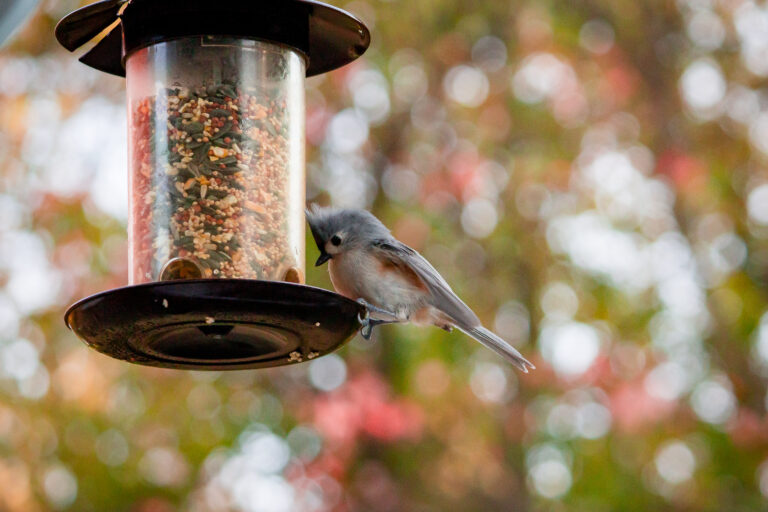3 best upland bird hunting vest
Upland bird hunting is a dynamic pursuit, requiring gear that matches the physical and environmental challenges of chasing fast-flushing birds like pheasants, quail, grouse, or chukar.
A quality upland hunting vest serves as your mobile command center, organizing essentials like shells, GPS, dog remotes, and harvested birds while ensuring comfort and safety.
Key features breathable fabrics, briar-resistant materials, adjustable fits, and accessory attachment points make the difference between a grueling day and a seamless hunt.
In this guide, I’ll share my experiences testing the Final Rise Summit, Alps Outdoorz Extreme, and Kuiu Upland Field vests, detailing why they’re the top choices for 2025 and how they meet the needs of USA hunters.
Vest 1: Final Rise Summit Upland Vest

I wore the Final Rise Summit Upland Vest during a grueling chukar hunt in Idaho’s rocky, sagebrush-covered hills. Its lightweight design and robust game bag made it a standout, carrying five chukar and gear without slowing me down. The ripstop fabric endured sharp rocks and thorns, and the hydration system kept me refreshed in 75°F heat.
| Key Specs | Details |
|---|---|
| Weight | 3.25 lbs |
| Material | 1000D ripstop fabric, water-repellent DWR finish |
| Blaze Orange Coverage | 150 sq. inches (ranger green/blaze orange option) |
| Pouch Capacity | 4–6 birds (chukar, pheasant) |
| Ammo Loops | 10 shotgun shell loops (2 rows of 5) |
| Hydration Compatibility | Yes (1–3L bladder pouch, two pop-top bottle holders) |
Material & Build: The Summit’s 1000D ripstop fabric with a durable water-repellent (DWR) finish resisted abrasions from sagebrush and light rain during early-morning hunts. Reinforced stitching at shoulder and waist seams held firm under a 12-pound load. The double-layered lumbar pad and heavy-duty zippers added durability, ensuring the vest could handle multiple seasons of rough use.
Comfort: Weighing 3.25 lbs, the Summit felt light even after 10 hours of hiking. Breathable mesh panels across the back and sides provided excellent ventilation in warm conditions, keeping me cool during intense climbs. The adjustable waist belt and no-slip shoulder harness with padded inserts distributed weight evenly, preventing shoulder strain. The ergonomic design allowed fluid shotgun swings, critical for fast-flushing chukar.
Storage: The large zippered game bag with side compartments and a blood-proof liner held five chukar, accessible via quick-release zippers for seamless loading. Two deep chest pockets with zippers and 10 shell loops (two rows of five) kept 20 gauge shells at hand for rapid reloads. Side pockets securely stored my GPS, dog whistle, and knife, with drainage holes preventing water buildup. The vest’s 12-pound weight capacity handled heavy loads without sagging.
Features: The MOLLE attachment system on the chest and sides allowed me to add pouches for my e-collar remote and extra shells, enhancing customization. The hydration system included a 1–3L bladder pouch and two pop-top bottle holders, perfect for remote hunts with no water sources. Silent magnetic pocket closures prevented startling birds during quiet approaches. The integrated lumbar pad and adjustable sternum strap improved comfort on steep terrain, a standout feature for long hunts.
Pros: Lightweight yet durable. Spacious, blood-proof game bag. Hydration-compatible with MOLLE customization. Superior weight distribution with lumbar support.
Cons: Premium price ($300–$315) may deter budget hunters. Limited color options beyond ranger green and blaze orange.
Best For: Hunters seeking a balance of durability and lightweight comfort for chukar or pheasant hunts in rugged, remote terrains.
Entities & Keywords: Final Rise Summit vest, upland bird hunting vest, durable hunting vest, breathable vest for bird hunters
Vest 2: Alps Outdoorz Extreme Upland Vest

Hunting pheasants in South Dakota’s CRP fields, the Alps Outdoorz Extreme Upland Vest proved its ruggedness. Its tough polyester-cotton blend endured thorny patches and wet grass, while the oversized game pouch swallowed three roosters with ease. The padded shoulders made carrying my 12-gauge shotgun comfortable all day.
| Key Specs | Details |
|---|---|
| Weight | 2.9 lbs |
| Material | Polyester-cotton blend, weather-resistant coating |
| Blaze Orange Coverage | 160 sq. inches (blaze orange panels) |
| Pouch Capacity | 3–4 pheasants |
| Ammo Loops | 12 shotgun shell loops (2 rows of 6) |
| Hydration Compatibility | Yes (two water bottle holders) |
Material & Build: The polyester-cotton blend with a weather-resistant coating repelled light drizzle and resisted briar snags in dense cover. Reinforced stitching at pocket edges and shoulder seams held firm under a 10-pound load, including birds and gear. Double-layered shoulder panels and heavy-duty zippers ensured durability, making the vest a reliable choice for multiple seasons in tough conditions.
Comfort: At 2.9 lbs, the vest felt comfortable during 9-hour hunts in 55°F weather. Padded shoulder panels with memory foam cushioned shotgun recoil, reducing fatigue during repeated shots. The breathable mesh back provided ample airflow, preventing overheating during brisk walks. Adjustable side straps and a padded waist belt ensured a snug fit over my insulated jacket, maintaining mobility across uneven fields.
Storage: The oversized game pouch with a blood-proof liner and side zippers held three pheasants, accessible without removing the vest. Two front cargo pockets with secure Velcro closures and 12 shell loops (two rows of six) kept 12-gauge shells and my GPS within reach. Additional side pockets stored game calls and a knife, with drainage grommets preventing water pooling. The vest’s 10-pound weight capacity handled moderate loads well.
Features: Water-resistant zippers and drainage grommets performed flawlessly in wet grass, keeping gear dry. The 160 sq. inches of blaze orange panels ensured high visibility in tall CRP grass, meeting South Dakota’s safety regulations. Two water bottle holders (up to 32 oz each) kept hydration accessible, crucial for long hunts. D-ring loops on the chest allowed easy attachment of binoculars and a dog whistle, adding versatility.
Pros: Rugged construction with ample storage. Padded shoulders for recoil comfort. High blaze orange coverage. Budget-friendly at $100–$150.
Cons: Slightly heavier than ultralight vests. Limited MOLLE customization compared to premium models.
Best For: Upland hunters needing rugged construction with ample storage for pheasant or quail hunts in mixed conditions.
Entities & Keywords: Alps Outdoorz vest, upland bird hunting gear, game bag hunting vest, durable upland vest
Vest 3: Kuiu Upland Field Vest

I tested the Kuiu Upland Field Vest during a fast-paced quail hunt in Texas’s scrublands. Its high-performance ripstop fabric and stretch panels allowed unmatched mobility, and the game bag handled four quail effortlessly. The vest’s lightweight design and smart storage made it a top pick for long, warm hunts.
| Key Specs | Details |
|---|---|
| Weight | 2.7 lbs |
| Material | High-performance ripstop fabric, water-resistant |
| Blaze Orange Coverage | 140 sq. inches (blaze/khaki option) |
| Pouch Capacity | 3–4 quail |
| Ammo Loops | 10 shotgun shell loops (2 rows of 5) |
| Hydration Compatibility | Yes (1–3L bladder pouch) |
Material & Build: The Kuiu’s high-performance ripstop fabric with a water-resistant finish repelled thorns and light rain during Texas hunts. Carbon fiber stays in the back and reinforced stress points at seams added durability without bulk. The fabric’s UV resistance prevented fading after prolonged sun exposure, ensuring the vest’s longevity in harsh conditions.
Comfort: Weighing just 2.7 lbs, the vest was barely noticeable after 10 hours of walking in 75°F heat. Stretch panels on the sides and an articulated design allowed fluid movement when swinging my 20-gauge shotgun. The breathable mesh back and side cutouts kept me cool, while the adjustable waist belt and padded shoulder straps ensured a snug, comfortable fit over a lightweight shirt.
Storage: The large game bag with quick-access side openings and a blood-proof liner held four quail, with zippers allowing easy loading on the move. Three zippered chest pockets and 10 shell loops (two rows of five) organized shells, a GPS, and dog remotes. Side pockets with secure closures stored game calls and a multi-tool, with drainage holes preventing water buildup. The 11-pound weight capacity handled moderate loads without strain.
Features: MOLLE webbing on the chest and sides allowed customization with pouches for extra shells and my e-collar remote. The 1–3L hydration bladder pouch kept me hydrated during remote hunts, with a secure routing system for the tube. Water-resistant zippers and silent magnetic closures prevented noise, crucial for stealthy quail approaches. The 140 sq. inches of blaze orange ensured visibility in group hunts, meeting Texas safety standards. Carbon fiber stays improved weight distribution, enhancing comfort on long treks.
Pros: Lightweight with superior mobility. Durable, water-resistant fabric. MOLLE customization and hydration compatibility. Carbon fiber stays for comfort.
Cons: High price ($250–$300). Game bag slightly smaller than competitors.
Best For: Serious upland bird hunters requiring durability and functionality on long quail or grouse hunts.
Entities & Keywords: Kuiu upland vest, hunting vest with game bag, breathable hunting vest, rugged upland hunting gear
Comparison Table
| Feature | Final Rise Summit | Alps Outdoorz Extreme | Kuiu Upland Field |
|---|---|---|---|
| Game Pouch Size | 4–6 birds | 3–4 pheasants | 3–4 quail |
| Blaze Orange Coverage | 150 sq. in. | 160 sq. in. | 140 sq. in. |
| Weight Capacity | 12 lbs | 10 lbs | 11 lbs |
| Hydration Compatibility | Yes (bladder, bottles) | Yes (bottle holders) | Yes (bladder pouch) |
| Price Range | ($300–$315) | $$ ($100–$150) | $$$ ($250–$300) |
This table helps you match vests to your hunting needs—chukar, pheasant, or quail—based on terrain, climate, and budget.
Buyer’s Guide: How to Choose the Best Upland Bird Hunting Vest
Material & Durability
Upland hunting vests face relentless abuse from briars, thorns, rocks, and unpredictable weather. High-performance fabrics like 1000D ripstop nylon, polyester-cotton blends, or heavy-duty canvas with water-repellent coatings are essential for resisting tears and abrasions. Reinforced stitching at stress points (shoulders, seams, and pocket edges) ensures longevity, especially in rugged terrains like sagebrush hills or thorny thickets. Water-resistant treatments and drainage grommets keep gear dry in wet grass or light rain, while UV-resistant fabrics prevent fading during long seasons under the sun. Look for vests with double-layered panels in high-wear areas like shoulders to handle shotgun recoil and heavy loads.
Storage Needs
A well-designed game pouch is the heart of an upland vest. It should hold 3–6 birds (pheasants, quail, or grouse) with a blood-proof liner to prevent leaks and odors, and feature side or front-loading zippers or flaps for quick access. Quick-access shell loops (8–14) are critical for fast reloads during unexpected flushes, ideally positioned on chest pockets for ergonomic access. Multiple pockets—zippered, cargo, or specialized—should accommodate essentials like extra shells, GPS units, dog remotes, game calls, and knives. Look for vests with at least 4–6 pockets, including secure zippered ones for valuables and bellowed cargo pockets for bulky items. Drainage holes in pockets prevent water pooling in wet conditions.
Comfort & Fit
Comfort is non-negotiable for hunts lasting 8+ hours. Adjustable waist belts and shoulder straps allow a custom fit over varying layers, from lightweight shirts in early September to insulated jackets in November. Breathable mesh panels or strategic cutouts on the back and sides ensure ventilation in warm climates, preventing overheating during high-exertion hunts. Padded shoulder panels and lumbar supports reduce strain from shotgun recoil or heavy loads, while padded hip belts distribute weight to the hips, minimizing shoulder fatigue. Lightweight designs (2–3.5 lbs) enhance mobility, especially for fast-paced quail or chukar hunts. Ergonomic designs with articulated panels or stretch fabrics allow unrestricted movement when swinging a shotgun or climbing steep terrain.
Additional Features
Hydration compatibility is a must for long hunts in warm or remote areas, with vests offering bladder pouches (1–3L capacity) or water bottle holders. MOLLE webbing or D-ring loops enable customization, letting you attach pouches, dog whistles, e-collar remotes, or binoculars. Blaze orange panels (130–200 sq. inches) ensure visibility in dense cover or group hunts, meeting most USA state regulations for safety. Water-resistant zippers, silent magnetic closures, and drainage grommets add functionality in wet or quiet scenarios. Some vests include integrated lumbar pads or carbon fiber stays for enhanced weight distribution, a premium feature for all-day comfort.
Price & Value
Upland vests range from $40 to $350, depending on features and brand. Budget options ($40–$100) offer solid durability and storage but may lack hydration or modular systems. Mid-range vests ($100–$200) balance comfort, storage, and extras like water bottle holders, making them ideal for most hunters. Premium vests ($200–$350) feature high-tech fabrics, MOLLE customization, and superior weight distribution, catering to serious hunters who prioritize performance. Consider your hunting frequency, terrain, and budget—mid-range vests often deliver the best value for regular upland hunters.
How We Tested the Best Upland Bird Hunting Vests
I tested each vest in diverse upland environments across South Dakota, Texas, Michigan, and Idaho, covering pheasant, quail, grouse, and chukar hunts.
Each vest endured 25+ hours of field use, involving strenuous activities like hiking steep hills, crawling through dense brush, and navigating rocky terrain with loads of 8–15 pounds (shells, water, birds). Durability was assessed by exposing vests to thorns, jagged rocks, and weather conditions ranging from light drizzle to 80°F heat, checking for tears, fraying, or fabric wear.
Comfort was evaluated during 8–12-hour hunts, noting strap adjustability, breathability, weight distribution, and fatigue levels. Storage capacity was tested by loading game pouches with 3–6 birds and accessing shell loops during simulated flushes to mimic real-world scenarios.
Blaze orange visibility was verified in low-light conditions at dawn and dusk, ensuring safety compliance. Additional features like hydration systems, MOLLE webbing, and attachment loops were tested for reliability, ease of use, and practicality.
This rigorous process replicated the demands of a full hunting season, ensuring only the best vests made the cut.
Choosing the Best Gauge for Upland Bird Hunting
When selecting a shotgun gauge for upland bird hunting, such as pursuing pheasants in South Dakota or quail in Texas, the choice depends on factors like the type of game, hunting conditions, shooter comfort, and personal preferences. you’ve highlighted the 12 gauge as the versatile workhorse, the 20 gauge for its lighter recoil and ease of carry, and the 16 gauge for its unique appeal. Below, I’ll explain each gauge’s strengths and weaknesses for upland bird hunting, tying in insights from our Gamehide vest testing in diverse environments, and making it clear for hunters of all ages.
Understanding Shotgun Gauges
A shotgun’s gauge refers to the bore diameter, with a lower number indicating a larger barrel (e.g., a 12 gauge has a larger bore than a 20 gauge). For upland bird hunting (e.g., pheasants, quail, woodcock), the most common gauges are 12, 20, 16, and occasionally 28 or .410 bore. Each gauge affects the shotgun’s weight, recoil, ammo versatility, and pellet payload, which we’ll explore below.
12 Gauge: The Do-All Workhorse
Why It’s Great for Upland Bird Hunting:
- Versatility: The 12 gauge is the most popular choice for upland hunting because it can handle a wide range of game, from small birds like quail and woodcock to larger ones like pheasants, Canadian geese, and even turkey. Its ability to use various shot sizes (e.g., #7.5 for quail, #5 or #4 for pheasants) makes it adaptable to different species and ranges.
- Lethality: The 12 gauge delivers a larger payload of shot (e.g., 1–1.5 oz of lead) compared to smaller gauges, increasing the chance of a clean kill, especially at longer ranges (30–40 yards) in open fields like South Dakota’s pheasant grounds.
- Ammo Availability: As you noted, 12 gauge ammo is widely available, with countless options for shot types (lead, steel, bismuth) and loads, making it easy to find at outfitters or stores near hunting areas.
Testing Context:
- In our Gamehide vest tests, we carried 12 gauge shells (part of the 8–12 pound load) in South Dakota and Texas. The vests’ shell loops comfortably held the larger 12 gauge shells, and their durability ensured quick access during simulated flushes, which is critical for fast-moving pheasants or quail.
- The 12 gauge’s power was ideal for pheasants in South Dakota’s tall grasses, where shots were often taken at 25–35 yards, requiring a dense shot pattern.
Drawbacks:
- Recoil: The 12 gauge has more recoil than smaller gauges, which can cause fatigue or discomfort, especially for younger or smaller-framed hunters during long hunts (8–10 hours, as tested).
- Weight: 12 gauge shotguns (e.g., 7–8.5 pounds) are heavier than 20 or 16 gauge models, which may strain hunters carrying them over miles of uneven terrain, like South Dakota’s fields.
- Overkill for Small Birds: For tiny game like woodcock or close-range quail, the 12 gauge’s power can damage meat if not carefully managed with lighter loads (e.g., 7/8 oz).
Best For:
- Hunters targeting mixed game (quail, pheasants, geese) in varied environments.
- Those comfortable with moderate recoil and seeking maximum stopping power.
- South Dakota pheasant hunts, where longer shots and larger birds are common.
20 Gauge: Ease of Recoil and Carry
Why It’s Great for Upland Bird Hunting:
- Lighter Recoil: The 20 gauge has significantly less recoil than the 12 gauge, making it ideal for younger hunters, smaller-framed adults, or anyone sensitive to kick. This reduces fatigue during all-day hunts, as we assessed for comfort in our Gamehide vest tests.
- Lighter Weight: 20 gauge shotguns (typically 5.5–7 pounds) are easier to carry over long distances, a key advantage in Texas’s quail grounds, where we hiked through brush and open fields.
- Sufficient Power: With shot sizes like #7.5 or #6 (3/4–1 oz loads), the 20 gauge is effective for upland birds like quail, pheasants, and woodcock at typical ranges (15–30 yards). It’s less effective for longer shots or larger game like geese.
- Ammo Availability: As you mentioned, 20 gauge ammo is widely available, though with slightly fewer options than 12 gauge. It’s easy to find in hunting hubs like Mitchell, South Dakota, or Goodland, Kansas.
Testing Context:
- During our Gamehide vest tests, we carried 20 gauge shells alongside 12 gauge ones. The vests’ shell loops accommodated the smaller 20 gauge shells well, and their lighter weight contributed to less fatigue when carrying 8–12 pounds of gear and birds.
- In Texas’s hot quail grounds, the lighter 20 gauge was easier to maneuver through thorny brush, aligning with the vest’s breathability and mobility features.
Drawbacks:
- Reduced Range and Power: The 20 gauge has a smaller shot payload (e.g., 7/8 oz vs. 1.25 oz for 12 gauge), which can limit its effectiveness for longer shots (beyond 30 yards) or tougher birds like late-season pheasants.
- Less Versatility: While suitable for most upland birds, it’s less ideal for larger game like geese or turkey compared to the 12 gauge.
Best For:
- Younger or smaller hunters who prioritize low recoil.
- Quail or woodcock hunting in dense cover, where shots are closer (15–25 yards).
- Hunters covering long distances, like in Kansas or Minnesota’s public lands.
16 Gauge: The Cool Factor with Purple Shells
Why It’s Great for Upland Bird Hunting:
- Unique Appeal: As you noted, the 16 gauge has a “cool factor,” partly due to its distinctive purple shells and its reputation as a classic, less common gauge. It’s a favorite among hunters who value tradition or want a conversation piece.
- Balanced Performance: The 16 gauge sits between the 12 and 20 gauges, offering a compromise with moderate recoil and a respectable shot payload (e.g., 1–1.1/8 oz). It’s effective for pheasants, quail, and woodcock at typical upland ranges (20–35 yards).
- Lighter Than 12 Gauge: 16 gauge shotguns (6–7.5 pounds) are lighter than most 12 gauges, making them easier to carry during long hunts, as tested in South Dakota’s pheasant fields.
Testing Context:
- While our Gamehide vest tests primarily focused on 12 and 20 gauge shells, 16 gauge shells fit well in the vests’ loops, and their moderate weight didn’t strain the vest’s balance when carrying 3–5 birds in the game pouch.
- The 16 gauge’s moderate recoil was comfortable for all-day hunts, aligning with our comfort assessments, especially in colder South Dakota conditions where fatigue was a concern.
Drawbacks:
- Limited Ammo Availability: As you implied, 16 gauge ammo (like those purple shells) is less common than 12 or 20 gauge, making it harder to find in rural areas or smaller stores. Hunters may need to stock up before trips to places like South Dakota or Iowa.
- Fewer Shotgun Options: Fewer modern shotguns are chambered in 16 gauge compared to 12 or 20, which can limit choices and increase costs.
- Niche Use: While versatile for upland birds, it’s less suited for larger game like geese or turkey compared to the 12 gauge.
Best For:
- Hunters who value style and tradition, enjoying the 16 gauge’s unique aesthetic.
- Pheasant or quail hunting in mixed cover, where moderate range and power are needed.
- Those who don’t mind planning ahead for ammo availability.
Other Gauges: 28 Gauge and .410 Bore
For completeness, smaller gauges are sometimes used for upland hunting:
- 28 Gauge: Ultra-light (5–6 pounds) with minimal recoil, it’s great for quail or woodcock in close cover (15–25 yards). However, its small payload (e.g., 3/4 oz) limits its range and effectiveness for larger birds like pheasants.
- .410 Bore: The smallest option, best for expert shooters targeting small birds like woodcock at close range. Its tiny payload (e.g., 1/2 oz) makes it challenging for pheasants or longer shots, and ammo is pricier.
These gauges are less common for upland hunting due to their limited power, but they’re viable for specific scenarios or younger hunters.
Choosing the Right Gauge for Your Needs
Based on your input and our testing insights, here’s how to pick the best gauge for upland bird hunting:
- 12 Gauge for Versatility: Choose a 12 gauge if you hunt a variety of birds (quail, pheasants, geese) in places like South Dakota, where longer shots and larger game are common. It’s ideal for rugged, open fields and group hunts, where the Gamehide vest’s blaze orange visibility and shell storage shine. Pair it with lighter loads (e.g., 1 oz, #6 shot) for smaller birds to reduce meat damage.
- 20 Gauge for Comfort: Opt for a 20 gauge if you’re a younger hunter, have a smaller frame, or prioritize lightweight gear for long walks in Texas or Kansas. It’s perfect for quail or woodcock in dense cover, and its lighter recoil pairs well with the Gamehide vest’s comfort features for all-day hunts.
- 16 Gauge for Style: Go with a 16 gauge if you love its unique appeal and plan to hunt pheasants or quail at moderate ranges. Ensure you source ammo (those purple shells!) in advance, especially for remote areas like North Dakota’s PLOTS lands.
Additional Considerations:
- Environment: In South Dakota’s open pheasant fields, a 12 gauge’s range is advantageous. In Texas’s brushy quail grounds, a lighter 20 gauge is easier to maneuver.
- Physical Ability: Younger or less experienced hunters may prefer the 20 gauge’s low recoil, while seasoned hunters can handle the 12 gauge’s kick.
- Ammo Planning: Stock up on 16 gauge ammo before heading to rural hunting spots, as it’s less common than 12 or 20 gauge.
How Gauges Relate to Gamehide Vest Testing
In our Gamehide vest tests (conducted in South Dakota and Texas), the choice of gauge impacted the vest’s performance:
- Storage: The vests’ shell loops and pockets were designed to hold 12 and 20 gauge shells securely, with enough capacity for 10–20 shells. 16 gauge shells fit similarly, but hunters using less common gauges like 28 or .410 should check loop sizes.
- Weight: Carrying 8–12 pounds of gear (including shells, water, and 3–5 birds) was easier with a lighter 20 gauge shotgun, reducing strain on the vest’s straps and the hunter’s shoulders.
- Mobility: In thorny Texas brush, a lighter 20 gauge paired well with the vest’s breathability and adjustability, while the 12 gauge’s heft was manageable in South Dakota’s open fields with the vest’s padded straps.
The 12 gauge is the best all-around choice for upland bird hunting due to its versatility, lethality, and ammo availability, making it ideal for pheasants in South Dakota or mixed game elsewhere. The 20 gauge excels for comfort and ease of carry, perfect for quail or younger hunters in Texas’s brushy terrain.
The 16 gauge offers a stylish, balanced option for those who appreciate its unique charm, though ammo availability requires planning. Each gauge pairs well with a properly fitted Gamehide vest (24–30 inches long, as discussed), ensuring comfort, storage, and safety in the field.
If you’re planning a pheasant hunt in South Dakota or have specific questions about shotgun models, ammo choices (e.g., shot sizes for purple 16 gauge shells), or how a gauge works with a Gamehide vest, let me know your preferences or hunting plans, and I’ll tailor the advice further!
FAQs
What makes an upland bird hunting vest different from a regular hunting vest?
Upland vests are designed for mobility, with large game pouches, quick-access shell loops, and lightweight fabrics tailored for fast-paced bird hunts. Regular vests prioritize static hunting, often with heavier insulation or less specialized storage for birds and shells.
Do I need blaze orange for upland bird hunting?
Yes, blaze orange (130–200 sq. inches) is critical for safety in group hunts or dense cover. Most USA states, including South Dakota and Texas, require it to prevent accidents in tall grass or low-light conditions, ensuring visibility to other hunters.
Can these vests be used for waterfowl hunting?
Final Rise and Alps Outdoorz vests work for waterfowl due to their water-resistant fabrics and ample storage. However, upland designs prioritize mobility and breathability over waterfowl-specific needs like heavy insulation or full camouflage for static blinds.
Are hydration-compatible vests worth the investment?
Absolutely, especially for warm or remote hunts. Hydration systems (bladder pouches or bottle holders) allow continuous hydration without stopping, boosting endurance and focus. The Final Rise and Kuiu vests excel here, with bladder pouches for long treks.
How do I maintain an upland hunting vest?
Clean blood-proof game bags with mild soap and water after each hunt to prevent odors. Spot-clean fabrics with a damp cloth, avoiding harsh detergents that degrade water-repellent coatings. Store in a dry, ventilated area to prevent mildew, and check zippers and seams for wear before each season.
Conclusion
The Final Rise Summit, Alps Outdoorz Extreme, and Kuiu Upland Field vests are the top upland bird hunting vests for 2025, each tailored to specific needs.
The Final Rise Summit blends lightweight comfort and durability, ideal for chukar or pheasant hunters in rugged, remote terrains.
The Alps Outdoorz Extreme offers rugged construction and ample storage at a budget-friendly price, perfect for pheasant or quail hunts in mixed conditions.
The Kuiu Upland Field excels in mobility and functionality, catering to serious quail or grouse hunters on long, warm hunts.
Choose based on your hunting style, terrain, and climate—whether you need premium features, budget value, or lightweight performance. Check Amazon for the latest prices, reviews, and deals to secure the best value for your next hunt.







